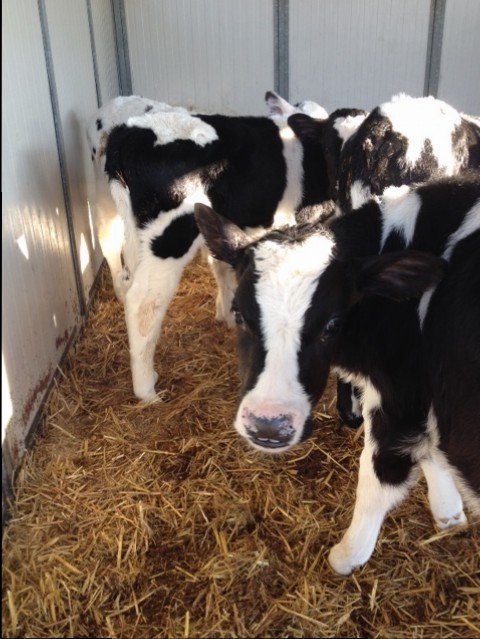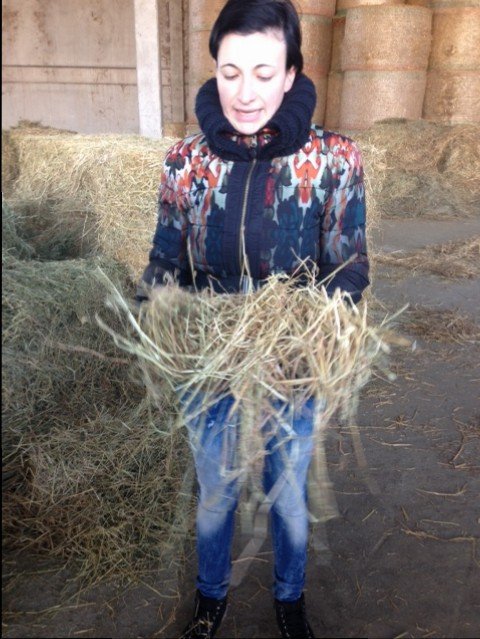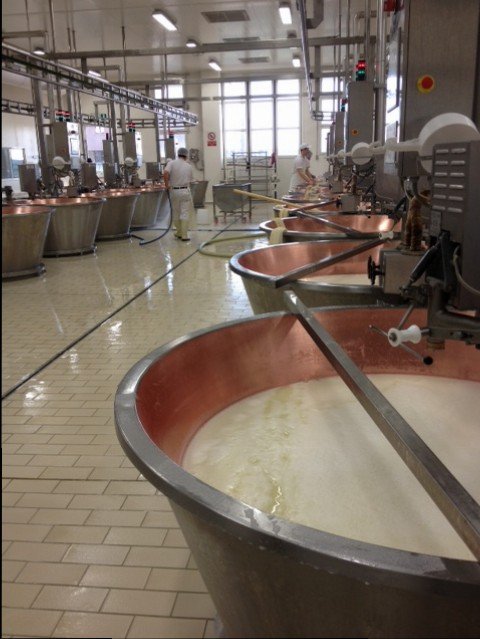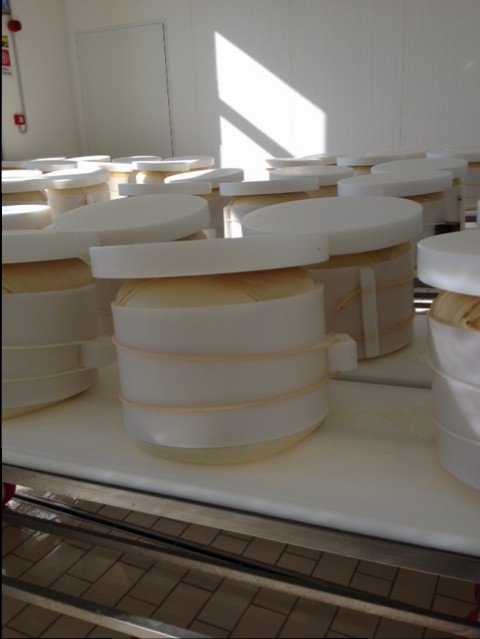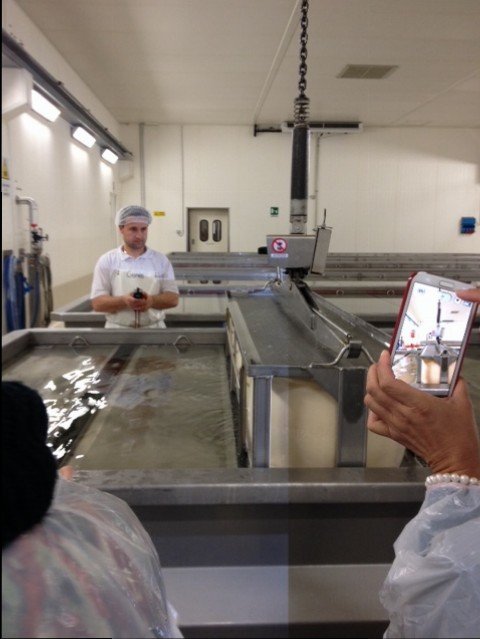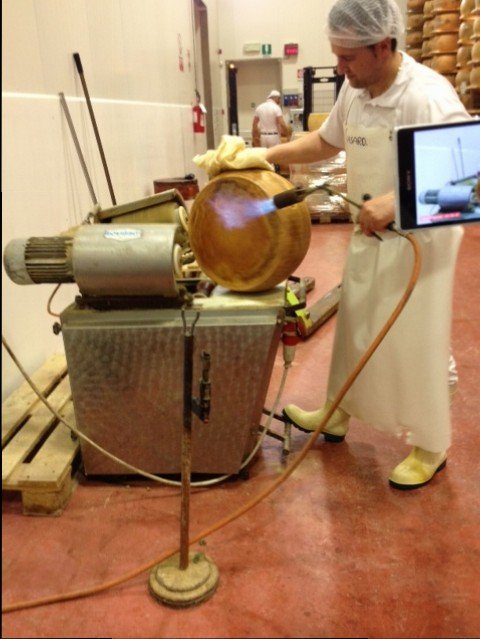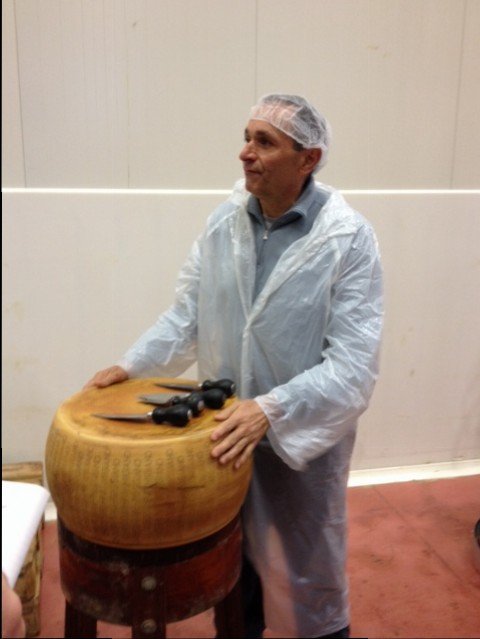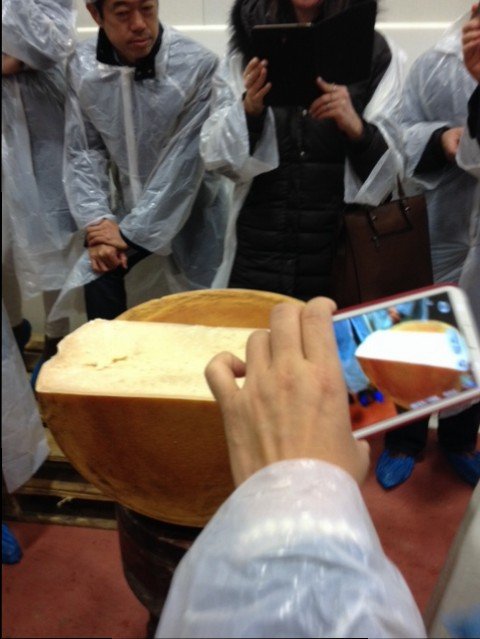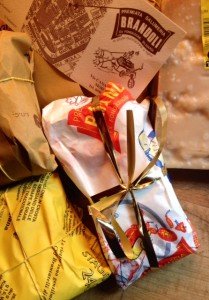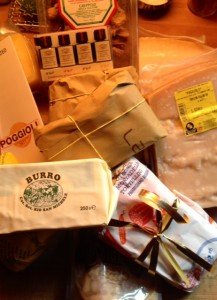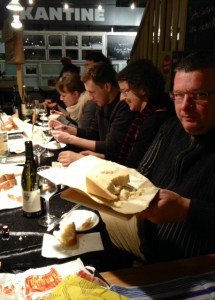I’ve finally been to Modena and the surrounding Emilia Romagna around that balsamico-famous town. It’s been my first time to meet up with venerable old Parmigiano Reggiano on his home turf! And of course there were a few slices of prosciutto di Parma and a few drops of Aceto Balsamico on the way… But for you, my HeinzelCheeseTalk past and future faithfuls, I came back loaded with cheesy goodness, to be explored at our big table at the Markthalle Neun.
I’d hoped to unearth a few other cheeses besides our crumbly friend, but in the Emilia region around Modena, Parma and Bologna cheese means Parmigiano, besides butter (we had gorgeous, almost white one from Caseificio San Michele) and some fresh stuff such as Strachino which does not like to travel at all. However, I had brought Ciccioli, deep-fried ham cuttings – very addictive!
And then: Parmigiano. Different ages, producers, and animal breeds. The cows can be white (the old Bianca Padana or Modenese, very rare and only made into cheese at one creamery), brown (Vacche Rosse di razza Reggiana, an old triple use breed which is still kept in the Apennine) or, the vast majority, black and white (high yielding modern Holstein-Friesians). On the slopes of the Apennine they are out on pastures during the summer, at up to 1200 meters altitude, in the plain they live in large open stables and get fed with grass, hay and cereal, but strictly no sileage (which is the big difference to Grana Padano, which therefore often contains lysozyme, a conservative made from eggwhite to avoid unwanted fermentation and therefore holes in the cheese).
I had brought cheeses that had matured between 24 to 36 months from various producers – as I could experience at Ettore Ferrarini’s Caseificio Poggioli which he runs with three dairy farmer colleagues, 24 months is the start of real Parmigiano life. Younger cheeses can taste lovely, but don’t have much character, too much baby fat to cut through, so to say. We all agreed that Parmigiano definitely taste mud better when it is freshly broken from one of the large 40kg wheels (not cut!). But hey, if the alternative is no good Parmigiano at all, the pragmatic vacuum-packaging solution for transport is an option (I just wish producers would experience with inert gas and/or cover the cheese first in paper to avoid the contact with the plastic). Then we finally started. 24 months organic both from Knippenbergs and Poggiolo’s Holsteins was very good and paired well with the Cava (thanks Wernher!) as well as with various dry Müller-Thurgau wines (Hasennest from Christian Stahl in Taubertal/Franken and Hohentwieler Olgaberg from Staatsweingut Meersburg on Lake Constance!). Our favorite in that age group however were the candidates from the Apennine and I had bought at Modena’s oldest Salumeria, Brandoli, and at the highly recommended cheese stall La Forma at the town’s absolutely beautiful covered market, Albinelli. 30 months old from Poggioli stood up very well to a few drops of Balsamico in various degrees of age and density from La Vecchia Dispensa in Castelvetro as well as to the unfiltered or rather non-disgorged Tre-Bicchiere-Lambrusco “Rimosso” from Cantina della Volta in Sorbara (to be found in Berlin at Weinhandlung Suff ).
At 36 months and made from the milk of the famous rare white cows the cheese from Caseificio Rosola tasted caramelly and almost sweet; for many of you this was the champion. Personally I preferred the one from red cows, same age (both bought at La Forma/Albinelli). It combined lively fruit aromas with dense serenity, and we could have talked forever… In the glass Riesling Sekt Brut from Weingut Pawis in Freyburg an der Saale – a delight. It was a CheeseTalk during which we kept jumping over the Alps and back again in the glass – and a very funny one far to the northeast with the cheese, as somebody had given me (with a friendly wink) „Parmigiano“ from Lithuania. It came with a very sweet story of a Indian looking, but thoroughly Viking-northern giant. Since then I know that Lithuanian is the world’s only living language that gets anywhere near the old sanskrit. Grazie, Signore Parmigiano, e a presto, cari amici!
HeinzelCheeseTalks take place regularly, usually on a Friday at 6pm at Markthalle Neun in Berlin-Kreuzberg. I bring some interesting cheese, open a few bottles of wine, and we sit around the large table opposite the Suff winestall, tasting, drinking, talking, discussing (mostly in German – but we usually manage to cater to English speakers too). Invites are sent out about ten days before we meet, to a mailing list you can join here. Reservations need to be confirmed and are strictly by first come first serve – so be quick! And please do let me know if you can’t make it – there is always a waiting list. A donation of ten euros per person (or one or two euros more if you really had a lot of fun..) is much appreciated. Cheesio!

